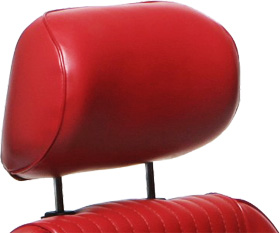
A Purdue University research team seeks to reduce vehicle rattles by designing an improved headrest.
The researchers have created mathematical models to simulate faulty headrest characteristics that lead to rattles and squeaks.
They believe the same simulations could be used to eliminate rattles and squeaks from other vehicle components.
Douglas Adams, Purdue associate professor of mechanical engineering, and doctoral student Janette Jaques use computer simulation to analyze headrest rattles to create designs that can eliminate the annoying noises that emanate from the headrest and compromise the perception of a vehicle’s quality.
“Quality and noise and vibration sort of go hand-in-hand,” Adams says. “Every car has headrests, so this problem is particularly interesting.”
The same analytical techniques used in the headrest research could help reduce squeaking and rattling in other components, such as instrument panels, seats, transmissions, suspension components and seatbelt mechanisms, he suggests.

Adams says rattling headrests are an industry-wide problem.
“The headrest is a surprisingly complex system,” he says. “The mechanism has to be rigid enough to keep the headrest from falling down, but not so rigid that you can’t easily adjust it. In other words, you have to put some mechanical free play into it, but you can’t put too much, because then it rattles.”
In a paper presented Feb. 20 during the International Modal Analysis Conference in Orlando, FL, the researchers said they created four equations corresponding to four key structural elements in the headrest system. The equations enable them to simulate headrest vibration.
Adams and his associate compared their simulations with data recorded by shaking a car seat with hydraulic equipment. Sensors attached to various points on the headrest record vibration data as the seat is shaken. “We used the model to identify how susceptible a certain design would be to rattle,” Adams says.
“You could modify the design of the headrest itself, which is our objective,” Adams says. “The main motivation here is to develop a modeling technique where you could do most of the design work before you ever built a prototype.”
“We determined that it is practical to use (our) model for designs that reduce rattling, spending less time and money building and testing and cutting down on the frustration of trying to find a needle in a haystack,” Adams says.
Increasing the mass of the headrest might be one approach to reduce the rattling, a design change that could be tested with the model. The model also could be used to learn whether increasing the friction or stiffness of the adjusting mechanism would reduce rattling.




